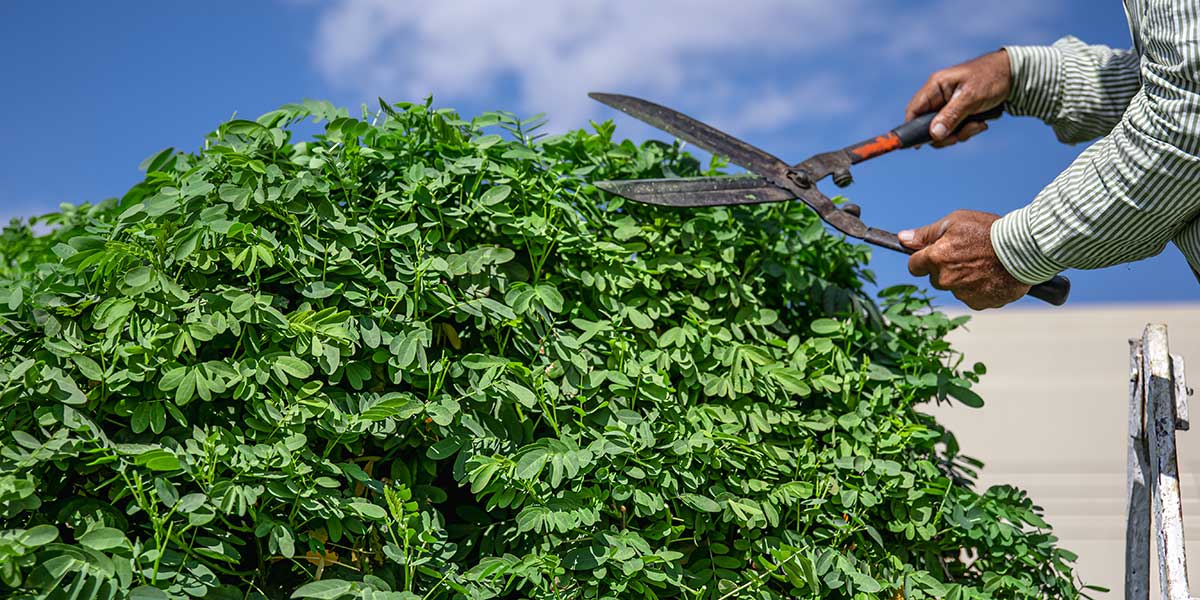If you’ve come across this post because you’re wondering how to prune a young tree, you are most welcome. Pruning young trees is an excellent way to control growth. Essentially, it’s proactive tree care, which could prevent future safety risks like falling limbs or power line interference.
Below, you’ll learn how to prune your young tree step by step. You can also call Southern Tree Pros for local tree services in Sandy Springs, GA.
The Benefits of Pruning a Young Tree
Before you start trimming branches, it helps to understand how early pruning shapes the tree’s long-term health and protects your property. For example, pruning:
- Builds a strong, balanced structure that supports healthy growth.
- Prevents breakage near your home by removing weak limbs early.
- Helps the tree grow faster by directing energy to the right places.
- Reduces the need for expensive structural pruning in the future.
- Makes the tree easier to care for as it matures.
Pruning early also helps your tree grow with a solid structure as it matures.
How To Prune a Young Tree Safely
Pruning a young tree takes planning and an understanding of how each cut affects growth. An arborist would use the steps below to shape a stable trunk and form healthy branch structures over the years.
Inspect the Tree and Plan Each Cut
Start by looking at the tree from all sides so you can see its shape, the direction each branch is growing, and how the trunk is forming. Decide which cuts will help the tree grow balanced and upright.
Look for obvious problems like dead wood, rubbing limbs, or crossing branches that compete for space and light. Check for damage from storms, animals, or poor planting, too.
Train the Central Leader
Young trees should grow with one strong, vertical trunk called the central leader.
Find the straightest, most upright stem and remove any second stem that competes with it. If any side shoots are growing taller than the leader, cut them back to keep the leader dominant. Avoid leaving a Y-shaped top, which can split as the tree gets bigger.
Select and Space the Scaffold Branches
Choose three to five scaffold branches that are evenly spaced around the trunk and have wide angles where they connect. These will form the main framework of the tree as it grows.
Knowing how to prune a young tree at this stage helps prevent long-term structural issues. Avoid placing branches directly above or across from each other since that puts stress on the trunk. Leave lower limbs in place for now to help thicken the base and protect the bark.
Remove Weak or Problematic Limbs
Cut any limbs growing toward the trunk or into the crown. Remove suckers, water sprouts, and narrow-angled branches. Trim limbs that extend too far to keep the crown balanced. Avoid taking more than 25% of the canopy at once.
Learning how to prune a young tree improves airflow and lowers the risk of breakage as your specimen strengthens.
Always Strive For Clean and Correct Pruning Cuts
Arborists will always cut just outside the branch collar, which is where the branch joins the trunk. Avoid flush cuts, which slow healing and invite decay. Never leave stubs or ragged edges.
It’s also important to use sharp tools to make smooth, even cuts for the sake of your tree’s health.
Call Southern Tree Pros for Expert Pruning Help With Young Trees
Our team knows how to prune a young tree to prevent breakage, guide healthy growth, and reduce future maintenance. Read our blog on the role of an arborist to see how our trained experts care for your trees. For professional tree trimming services, call Southern Tree Pros at (770) 841-1684.


